Our collective fear of death pushes us towards authoritarianism
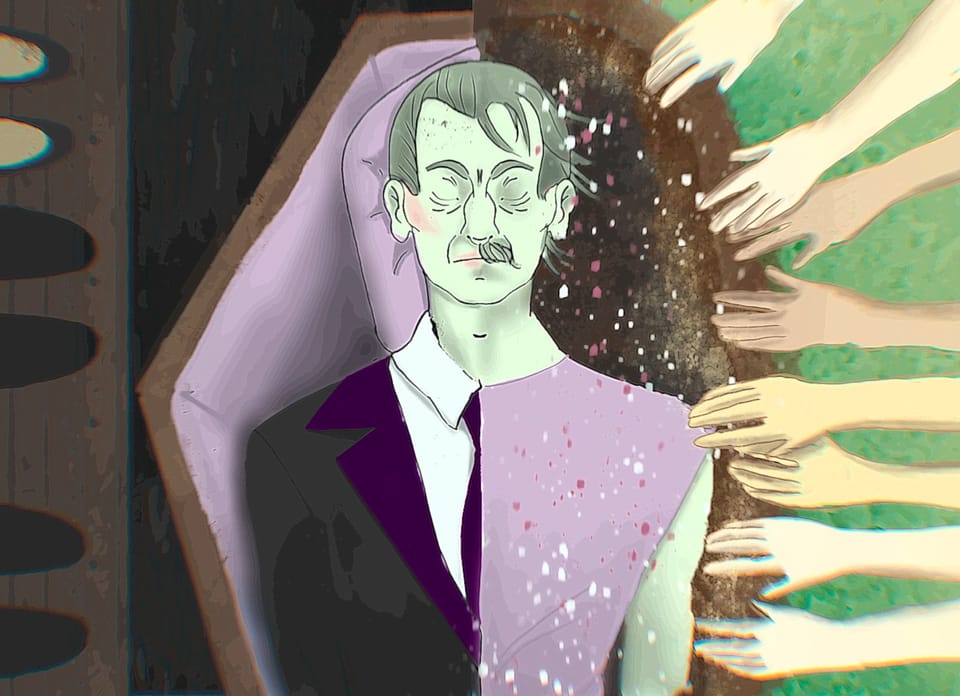
Written by Jack McGovan / Edited by Libby Langhorn & Ruxandra Grecu
My grandad’s funeral took place in my room almost four years ago today. Children played in the courtyard three stories below, their laughter warmer than the summer breeze disturbing the wide-open window. A strip of sunlight illuminated the wooden floor, dotted with fabrics destined for the washing basket. I sat on my single bed in a t-shirt and shorts, legs outstretched, my laptop on my knees. There, on the screen, was my family, dressed in black and sitting on pews.
It was a surreal experience, matched only by my landlady’s decision to paint the walls of my room aubergine purple before I moved in.
The separation between myself and my family, a symptom of both COVID-19 and living abroad, felt reflective of broader differences, too. I no longer identified with the pageantry of his funeral, having already connected with the idea of a natural burial for myself. During the grieving process, my perspective focused more on the joy I felt that my grandad had lived in the first place, while my family carried a deep sense of devastation.
The disparity in how we reacted to his death troubled me. Had I suppressed my true feelings somewhere along the line? Had I become numb to death because of the pandemic? Had I intellectualised loss to the point where I could no longer feel sad about the death of a family member?
Wanting answers, in part to assuage my feelings of guilt, I began to research how society more broadly engages with the idea of death. It wasn’t until recently, however, that I came across a potential explanation for the varied expressions of grief experienced by myself and my family: death anxiety. Prolonged grief symptoms have been linked to a stronger fear of death.
That’s not all death anxiety has been connected to. Judges handed out harsher sentences when reminded of death, and, under similar experimental conditions, Americans were more likely to assign blame to a Japanese company or driver than national equivalents in a fictional case about a car accident. People also tend to express a stronger level of belief in their political or religious views when reminded of their mortality.
One study found a “dramatic increase” in support for Bush and the Iraq War, among both liberals and conservatives, when participants were reminded of their mortality.
The way our perception of the world changes when confronted with death has potential widespread ramifications. One study found a “dramatic increase” in support for Bush and the Iraq War, among both liberals and conservatives, when participants were reminded of their mortality. A similar experiment over a decade later found those asked to think about their death were more likely to vote for Donald Trump. Although it’s the reverse for me—the thought of voting for Donald Trump makes eternal oblivion seem more appealing—the implication is that a fear of death is affecting our politics at a mass scale.
The underlying theory is that people are inclined to seek out charismatic leaders, rather than those championing fact and reason, when existential anxieties are at a high. What, then, are the consequences of living in a society where people are struggling to make enough money to afford shelter, food, or healthcare, where the frequency of severe wildfires and disastrous floods are increasing, and where the threat of another war hangs around the corner?
The death anxiety theory plays out: authoritarian regimes are gaining ground across the world.
James K. Rowe, professor of political ecology at the University of Victoria, Canada, believes death anxiety could go a long way to explaining the supremacist structures that underpin our society, whether they’re rooted in whiteness, maleness, or humanness, among an all-you-can-eat buffet of other options.
“We compensate for the smallness that we can feel in the face of finitude by imposing ourselves on each other and the more-than-human world as a way of gaining hits of the power and control that the natural world seems to deny us,” said Rowe. He added that many people have made similar arguments before him, including James Baldwin, Simone de Beauvoir, and Chögyam Trungpa.
The people at the top of these supremacist structures do seem obsessed with ideas embedded in a fear of death. Elon Musk desperately wants to be remembered for getting us to Mars, a rock devoid of joy much like his existence; Bryan Johnson takes a strict regimen of supplements to try extend his life, even though he looks like his soul has already left his body; and being trans is okay in Silicon Valley, as long as you’re transhumanist—shedding our corporeal forms and uploading our consciousness to computers—and not transgender.
Pursuing immortality, literal or symbolic, isn’t the only way to deal with death anxiety. “We know that the most effective treatment for fears of death is exposure therapy, so deliberately and gradually facing reminders of death, and you would think that that would work also on a societal level,” said Rachel Menzies, a clinical psychologist who has treated patients with death anxiety.
While access to therapy should be more widely available, it’s not a practical solution to a society-wide issue. We need other strategies to sooth our collective existential angst en masse if we want to be able to fortify our society against authoritarian rule. That, however, means looking at the world through a different lens than that of death-fearing billionaires.
Those pods that could allegedly turn people into trees were my first exposure to alternative approaches to death. I can’t remember how old I was, long enough ago that trees planted then would now stand taller than me, but I’d already attached myself to the environmental movement. The idea that I could improve the biosphere beyond my lifespan resonated with the sense of purpose I’d found for myself in the world.
While the pods never seem to have materialised, other forms of environmentally-friendly burial have picked up steam. Bodies can be dissolved or composted—known as aquamation and terramation respectively—or buried directly in the ground without being embalmed in what is called a natural burial.
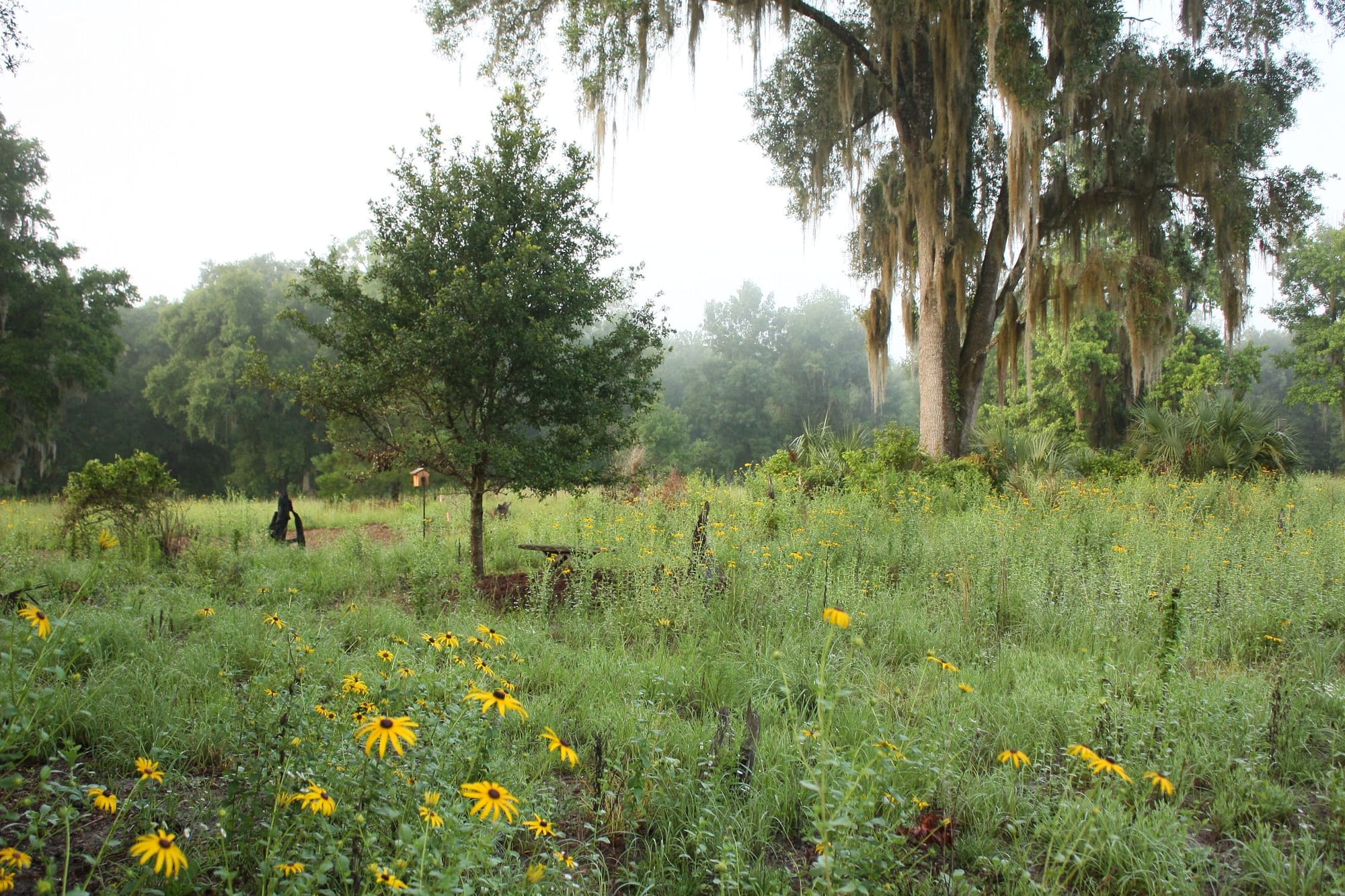
Reporting in Mother Jones found that nearly 52 percent of Americans expressed interest in green burial options, and in the UK more people than ever are choosing to be buried in green burial sites. Desmond Tutu famously chose to undergo aquamation upon his death in 2021.
There are good reasons to look at alternatives. Cremations make up the majority of burials, yet they release pollutants like mercury into the atmosphere, which can damage the brain, kidneys, or lungs. Similarly, burying caskets in the ground leads to embalming fluid and other toxic pollutants leaking into the soil and groundwater.
Green burials might, however, have the power to go further and cleanse our minds of death anxiety. “[Green burials] are based on embracing a view of the world that I think does foster death acceptance much more so than the dominant Judeo-Christian tradition,” said Sheldon Solomon, professor of psychology at Skidmore College, New York.
Solomon, who was involved in much of the research underpinning the links between authoritarianism and death anxiety, said green burials encourage us to think about our place in the universe, help us to build a stronger connection to the natural world, and enrich our appreciation of our limited lifespans. “Accepting the reality of the human condition brings the best out in us and enhances our appreciation of life in general,” he said.
Natural burials, at the very least, remind us that humans aren’t removed from natural processes. Bodies are laid to rest on a plot of land where the chaos of the wild dictates what happens afterwards. Traditional Western ceremonies, on the other hand, take place in highly-manicured cemeteries, with neat headstones and mown lawns. There is a sense of control or domination, reflective of how authoritarians enforce specific standards upon us, present in those spaces.
“[Green burials] are based on embracing a view of the world that I think does foster death acceptance much more so than the dominant Judeo-Christian tradition" – Sheldon Solomon, professor of psychology
There’s also what happens to our bodies, embalmed to give the impression that we’re still alive, untouched by decay or the disease of death. It might appear as if we’re combating or conquering death in delaying decomposition, one last laugh before the inevitable, yet controlling how bodies look and what’s done with them smells like authoritarian spirit.
Women or gender non-conforming people, who have beauty and gender standards imposed upon them while alive, might find green burials particularly freeing, said Sarah Chavez, co-founder of the Collective for Radical Death Studies, in an emailed statement. “These ideals are perpetuated by the funeral industry, too, as our embalmed bodies are presented in full makeup, under flattering lighting removing signs of death,” she said. “Whereas with green burials, nature gladly accepts our bodies just as we are.”
Loved ones are also invited to take a more active role in the natural burial process at Prairie Creek Conversation Cemetery by, for example, helping to dig the grave. It used to be common for families to prepare the dead themselves at home until the turn of the 20th century, when embalming became popular following the American Civil War. Returning families to the deathcare process can help with grief and death anxiety, said Heather Grove, executive director at Prairie Creek.
Being buried at Prairie Creek also has a collectivist spin to it. Due to the laws of the U.S., it's illegal to develop on land which has been used as a burial site, said Grove, meaning those laid to rest there are protecting the land and the biodiversity on it in perpetuity. In contrast, Western cemeteries remove biodiversity to inscribe an individual's achievements on headstones. Focusing on the collective over the individual is the antithesis of authoritarianism.
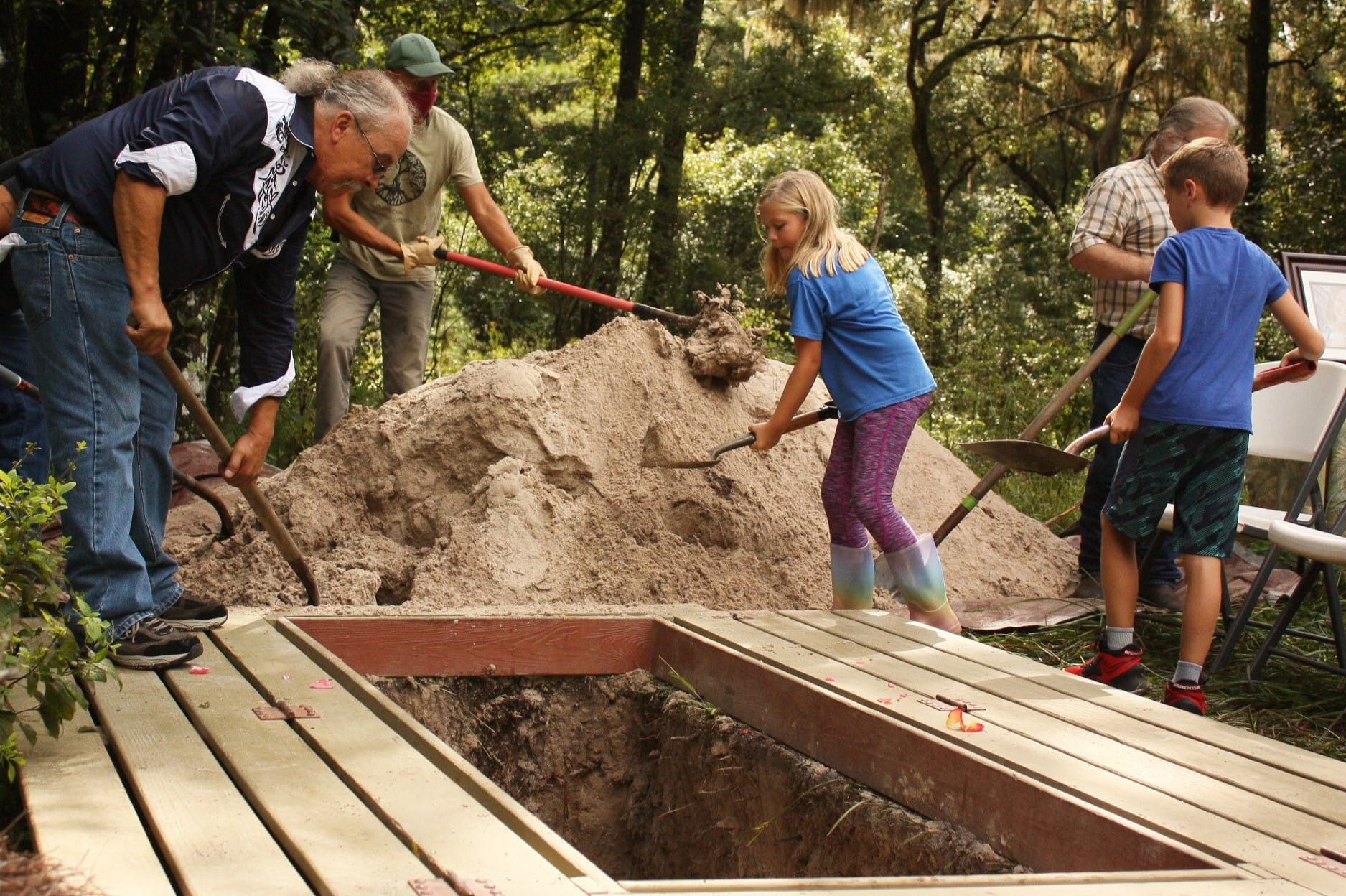
Jonathan Lewis-Jong, a self-employed experimental psychologist connected to the Universities of Oxford and Coventry who has studied death anxiety, is a little more sceptical of using death anxiety as an explanation for some of the issues we see in the world. “There have been several failures to replicate some of these experiments in social psychology,” he said, referring to the experiments on how death anxiety influences people’s behaviour.
Green burials, he said, mean going against the grain and therefore require more deliberation. “I think that's the thing that helps with making you feel a bit more comfortable with your mortality, rather than the specificities and particularities of green burials,” he said. He added that green burials would likely only help those who actually believe in the idea of them.
Although the arguments for green burials combating death anxiety, and by extension authoritarianism, seem logical to me, it could be because it confirms my prior beliefs. As somebody who wants a natural burial, writing about death could have stirred some existential angst within me that has made me more susceptible to arguments that make me feel better about my own choices.
I can also think of a number of people who would likely turn their nose up to the prospect of being buried without the fanfare of a traditional Western burial. Grove even shared an anecdote of one woman who, when she came to visit a relative at Prairie Creek, was appalled by the natural burial process and thought it was disrespectful of the dead. Forcing a green burial on her, and I'm going out on a limb here, probably wouldn’t make her less anxious about death.
Conflicting ideas can coexist. Natural burials could lead to a reduction in death anxiety, but maybe not everybody is ready to accept them today. As more people adopt them, attitudes will change. Cremation, now the most popular form of burial, wasn’t even allowed by the Catholic Church until 1963, showing that widespread and lasting change is possible in short periods of time. To fully deal with death anxiety, however, another piece of the puzzle is missing.
One of the most recent times I remember talking about death with somebody was during a first date I had last year. We strolled through a cemetery with our hands in the pockets of our respective winter jackets, mine as green as the foliage that had begun to liven up the otherwise bare branches. Inspired by our surroundings, we talked about different ways of dying, a light topic as far as initial interactions go.
Although our connection didn’t survive the day, that we could talk so freely about death was something I appreciated about that date. A report published last year found that only a third of Brits felt comfortable with and had talked to loved ones about their own deaths, with less than half having openly talked about their funeral wishes. Even my transcription software, based on pattern recognition in human conversations, wrote “deaf anxiety” rather than “death anxiety” while I researched this article. Death is a topic we love to avoid.
Breaking the taboo around death is key to alleviating death anxiety. “The more people can start to have those conversations about what's important to them in their death, what kind of values they want to carry with them into death, the more certainty and control they might feel over their own mortality,” said clinical psychologist Menzies.
A report published last year found that only a third of Brits felt comfortable with and had talked to loved ones about their own deaths, with less than half having openly talked about their funeral wishes.
There are a number of initiatives that are trying to encourage people to talk more about death. Death Over Dinner is a concept that originated in 2013 encouraging people to have dinner with their loved ones to speak about their wishes around death. Since 2011, people have been attending Death Cafes to speak about mortality and death in a relaxed social environment—according to the website, there have been 20,950 Death Cafes in 93 countries across the world.
Another option is to have a conversation with yourself. I’ve had many sleepless nights in my life suffering under the knowledge that I would one day die. On more than one occasion, I referred to human life as a curse, in that we get to experience the beauty of life only on the condition that it will one day be taken away from us.
It wasn’t until the pandemic hit that I truly started to reckon with my own mortality. Not only was I forced inside during lockdown, as all of us were, I’d just moved into a new room and quit my job. My life existed in this liminal space, leaving me with nothing familiar to grasp onto and no distractions available. I was forced to face the reality of my existence in a world where I was approaching 30.
Answers could also lie beyond the confines of Western society. In writing his book Radical Mindfulness: Why Transforming Fear of Death is Politically Vital, political ecologist Rowe collected insights from, among numerous other traditions, Indigenous thinkers. He explained how Indigenous cultures recognised the danger of existential fear and resentment and so developed strategies to deal with that. The Arikara, for example, would have somebody dress up as death, so the tribe could then talk about meeting death with one another.
Although he said we should be careful not to appropriate other cultures, he believes we can learn a lot from Indigenous people and the gratitude they feel towards the natural world. Developing our own cultures around death is therefore a necessary part of soothing our collective anxiety. “Just because we die doesn’t mean we’re flawed,” he said.
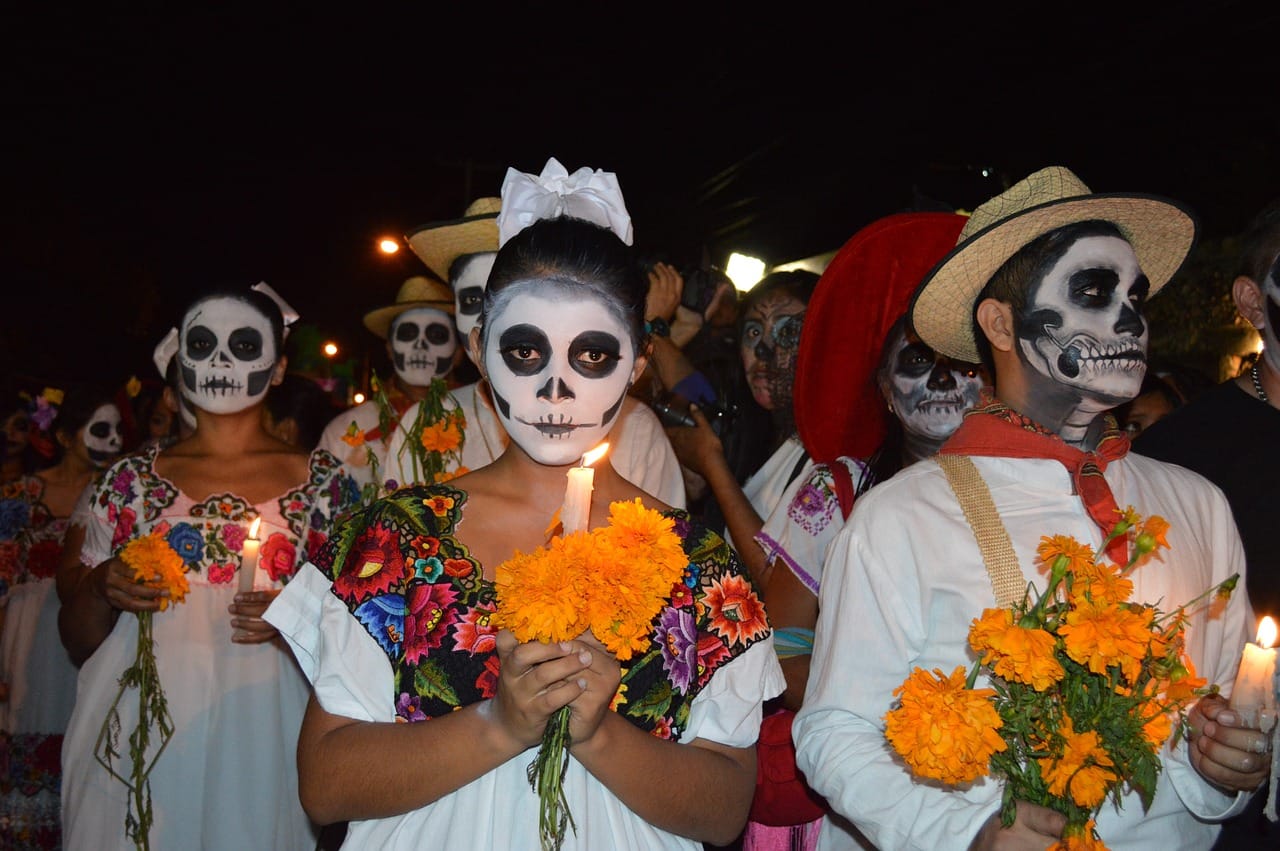
There is, of course, a limit to how far the death anxiety analysis can go, and that’s something both Rowe and psychologist Solomon acknowledged. “I don't think we can have an adequate conception of what's happening to ourselves and the world around us without considering the role of death anxiety, but it's not meant to be a complete unit dimensional explanation for everything,” said Solomon.
“We've had bursts of authoritarianism at different moments in history, but we've also had periods of relative non-authoritarianism,” said Rowe. “So I don't think we can say that death anxiety is the only driver of authoritarianism.”
He believes that growing levels of inequality make people feel insecure, and that can conjoin with their underlying existential fears to make them more susceptible to supporting demagogues. As such, he believes the most direct way to deal with authoritarianism is a higher rate of tax on the rich, and I agree with him wholeheartedly.
Still, acknowledging the role that death anxiety plays in our society is important for combating authoritarianism and other supremacist structures. As Ruth Mercedi, Dene-Métis elder and traditional healer in Yellowknife, Canada, said in a recorded video: “If we’re fearful, we’re easier to control.”
The culmination of all of this settles on an idea that I’ve thought about for a long time. I’ve often imagined people being buried on land where orchards grow. Fruits, ripe for the harvest, could be used in a yearly ceremony to make pies or other sweet goods as part of a festival that inspires discussions around death. Sociopaths in this scenario would be buried in patches used to grow beetroots or other disgusting veggies.
Cultural events could teach us that death is not something to be avoided or repulsed by, that our collective existence depends on it. We could be encouraged to share stories of our loved ones, like how my grandad always used to ask me to help him with his Playstation games when I was little. I could talk about how I sometimes think he pretended to be stuck just to spend time with me, while also considering the possibility that he really was just terrible at games.
Resisting death isn’t about avoiding the end of our natural lifespans. It’s about not letting that one aspect of our existence overshadow our whole lives. By shunning the topic of our mortality, we give ourselves over to people who are a cancer to our collective wellbeing. The greatest irony of all is that distancing ourselves from death only serves to make life less enjoyable than it has the potential to be.
Want to combat authoritarianism by making death less of a taboo?
- You could host a Death Over Dinner event with your loved ones to discuss death with them and break the taboo in your social circles. Similarly, you could attend or open a Death Café in your area.
- Look into green burial options in your area and plan for your death. Share and discuss your plans with your loved ones.
- If there are no green burial options in your area, you could try and build a group before reaching out to your local representative to demand options be implemented.
- Share this article with people who might be inspired to act, and subscribe to support ideas like this!

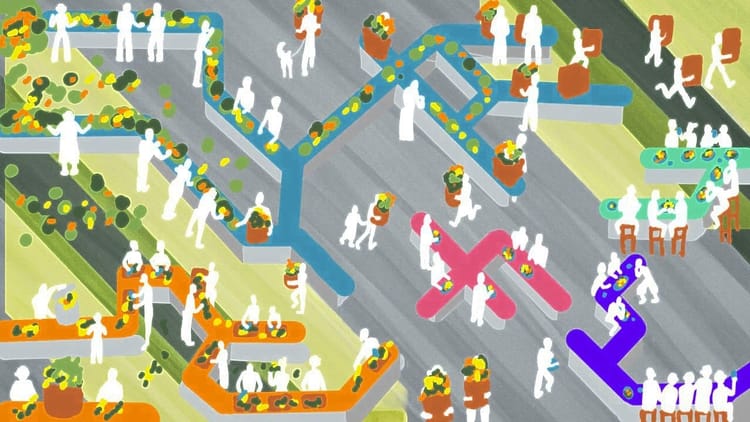
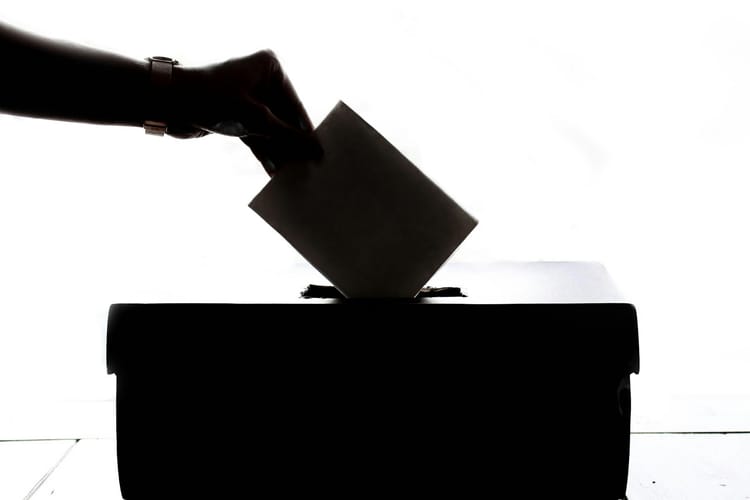
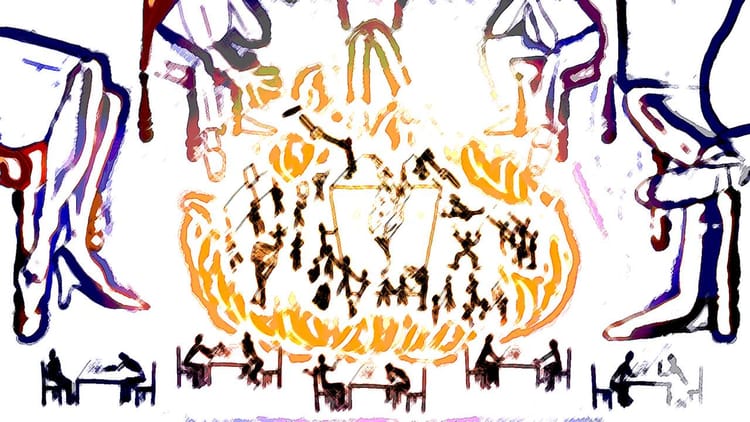

Member discussion